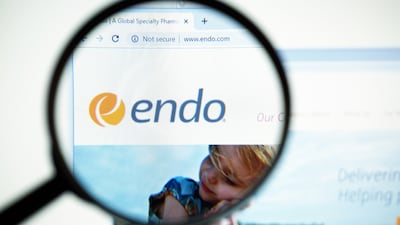ADVERTISEMENT
Rare Diseases
Meg Alexander is taking the place of founder Jeremy Levin, who is transitioning to executive chair, as Ovid prepares to move lead drug OV329 into a Phase IIa epilepsy study and generate initial data for its first-in-class KCC2 direct activators.
The German group is looking at ‘single digit billion’ opportunities, chief financial officer Helene von Roeder tells Scrip.
Patient advocacy organizations are transforming gene therapy development by funding research, de-risking programs and driving ultra-rare disease treatments from concept to clinic at unprecedented speed.
US firm’s first-to-market approval gives Endo a foothold in the rare metabolic disease space, widening access to a life-saving therapy for patients with urea cycle disorders.
The Supreme Court of India has allowed Natco Pharma to continue selling its generic version of Roche’s spinal muscular atrophy drug Evrysdi (risdiplam), declining to interfere with a Delhi High Court order that denied Roche an injunction while the patent infringement case proceeds.
The proportion of AMNOG benefit assessments leading to a positive rating, which has a direct impact on drug pricing, has decreased in recent years, according to analysis from the VFA, the association representing the German pharmaceutical industry.
Essential Pharma CEO Emma Johnson discusses the company’s strategic priorities and plans for growth as it expands its portfolio in rare diseases.
Speakers at the BioFuture conference discussed how confusing the policy environment has become, skepticism about AI/ML in drug development, the future of cancer immunotherapy, ideas for accelerating rare disease therapies and where the biopharma financing market is going.
Leaning on the “totality of the data” despite proof of functional efficacy, some biotechs seek conditional approval for rare disease drugs. The experiences of PTC, Sarepta, Sage and Intercept illustrate the risks of this approach.
Roche, which faced a high stakes patent setback for Evrysdi in India, appears to have appealed against a lower court’s ruling, which went decisively Natco’s way but also included distinct 'reservations' by the judges.
A new report highlighting 62 key drug launches expected in 2026 includes five products that are predicted to hit a golden trifecta of being a first launch, having practice-changing potential and the promise of being a blockbuster.
While some big pharma companies have exited cell and gene therapy, Novartis, Astellas, Gilead’s Kite and AstraZeneca’s Alexion are diving back in, executives said at ARM’s Cell and Gene Meeting on the Mesa.











